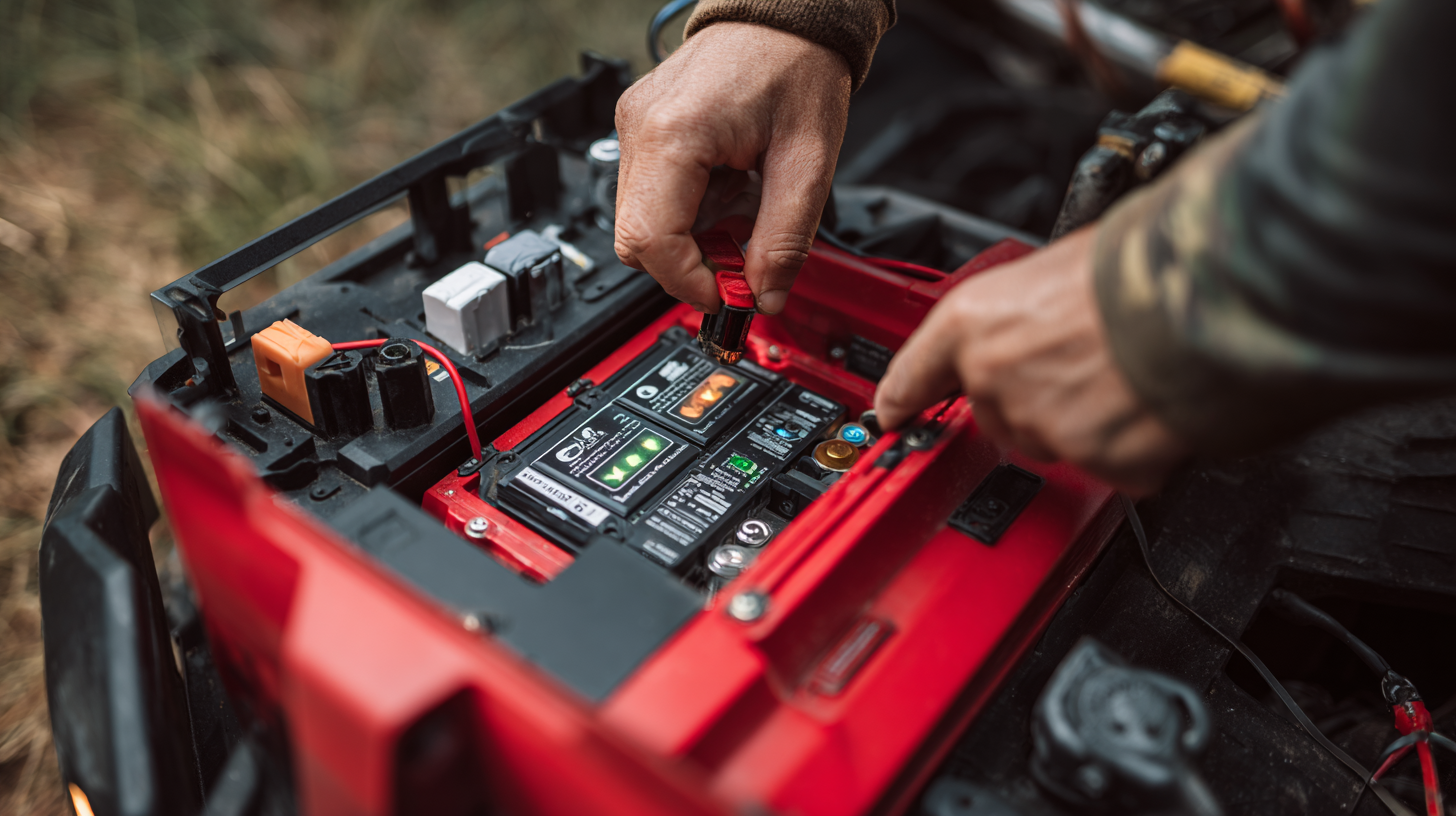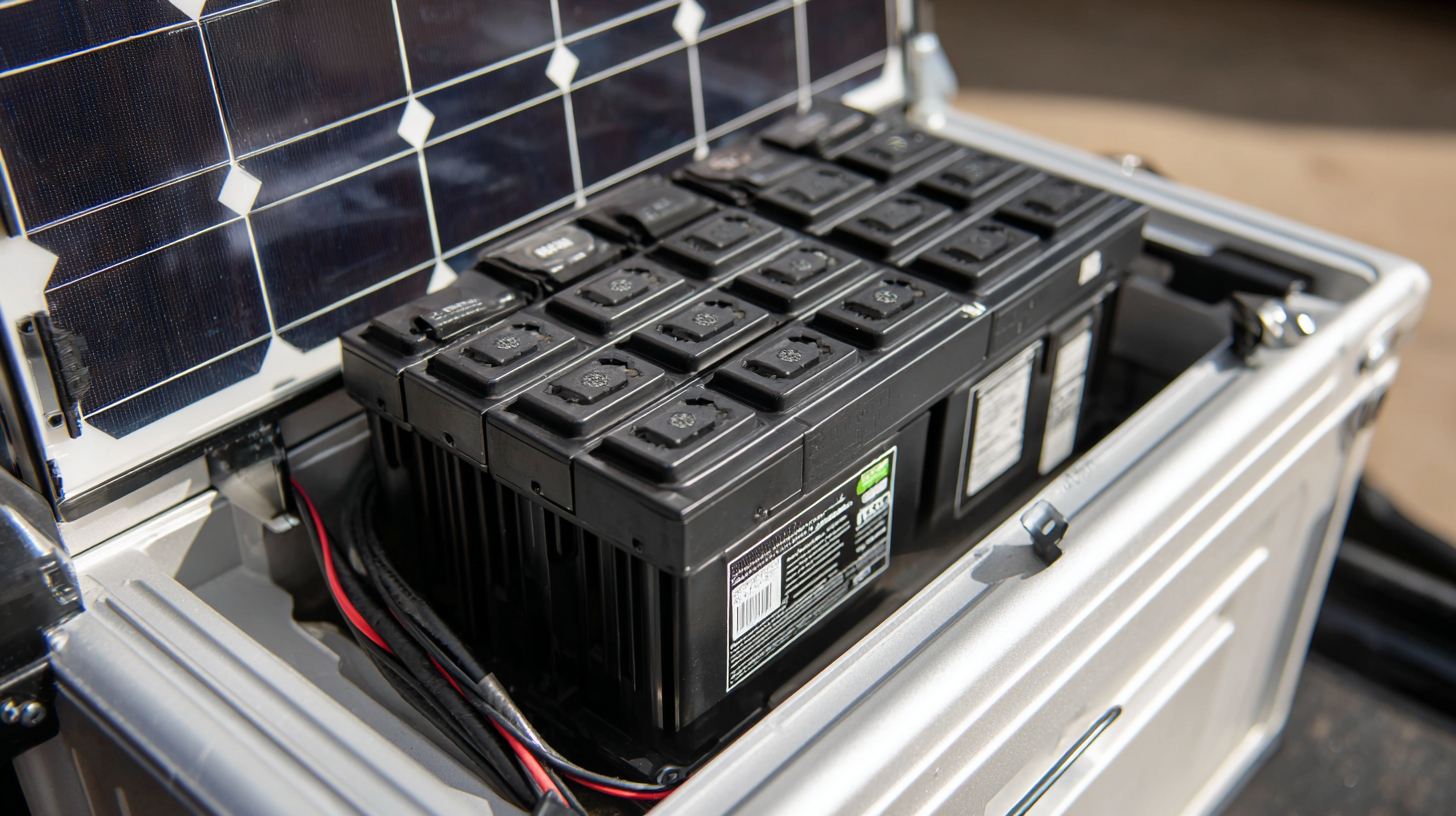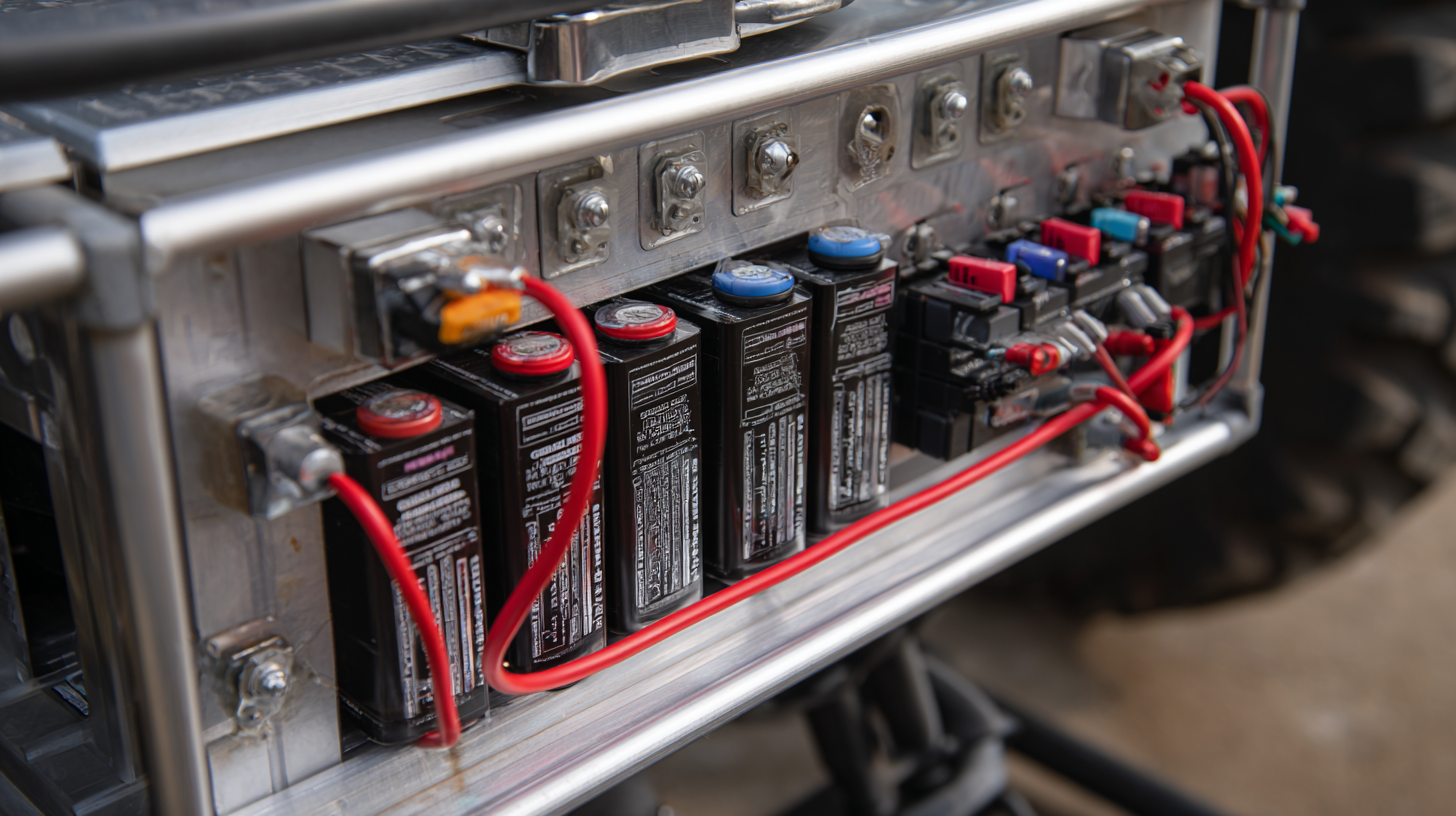
-
Home
-
Company
-
Products
-
News
-
FAQs
-
Blog
-
Contact
-
Phone
-
E-mail
-
Whatsapp
Leave Your Message

In recent years, the demand for high-efficiency energy storage solutions has skyrocketed, particularly in the realm of renewable energy and electric vehicles. According to a report from Transparency Market Research, the global market for lithium iron phosphate (LiFePO4) batteries is projected to grow significantly, driven by their superior thermal stability and safety compared to traditional lithium-ion batteries. The 48v 150amp Lifepo4 battery, specifically, has emerged as a frontrunner for various applications such as grid storage systems, electric vehicles, and backup power solutions. With its combination of higher energy density and longer cycle life, users can optimize performance and longevity through strategic practices. This article presents five essential tips for maximizing performance, ensuring that you harness the full potential of your 48v 150amp Lifepo4 battery while achieving better efficiency and reliability in your energy systems.

 Understanding the basics of 48V 150A LiFePO4 batteries is crucial for those looking to maximize their performance. These batteries, known for their high energy density and thermal stability, are increasingly popular in various applications, including renewable energy systems and electric vehicles. The 48V configuration signifies a versatile voltage level that can efficiently power a range of devices while delivering significant current, up to 150 amps. This capability not only enhances operational efficiency but also extends the overall lifespan of the battery when used correctly.
Understanding the basics of 48V 150A LiFePO4 batteries is crucial for those looking to maximize their performance. These batteries, known for their high energy density and thermal stability, are increasingly popular in various applications, including renewable energy systems and electric vehicles. The 48V configuration signifies a versatile voltage level that can efficiently power a range of devices while delivering significant current, up to 150 amps. This capability not only enhances operational efficiency but also extends the overall lifespan of the battery when used correctly.
To ensure optimal use, users should focus on key factors such as proper charging techniques, temperature management, and regular maintenance. Proper charging with a compatible charger designed for LiFePO4 chemistry can prevent overcharging and enhance battery longevity. Additionally, maintaining the ideal operating temperature—typically between 20°C and 25°C—helps prevent performance degradation. Monitoring the battery's condition through regular maintenance checks will further ensure its reliability and efficiency, ultimately allowing users to harness the full potential of their 48V 150A LiFePO4 batteries.
When it comes to maximizing the longevity and performance of 48v 150amp LiFePO4 batteries, following best practices for charging is crucial. Charging at appropriate voltages and currents not only enhances the lifespan of the batteries but also ensures safety. Utilizing multi-stage charging strategies, such as the MSCC (Multi-Stage Constant Current) method, can significantly reduce charging time while improving overall battery life compared to conventional methods. Such charging techniques distribute the load more evenly across the battery cells, minimizing stress and degradation.

In addition, consistent monitoring of battery temperature during the charging process can help avoid overheating, which is a common cause of reduced battery health. It's essential to allow batteries to cool down before commencing a recharge, especially after intensive usage. Adopting these practices, along with regular maintenance checks, can unlock the full potential of your LiFePO4 batteries, ensuring they perform optimally for many cycles while enhancing their overall durability.
When utilizing 48V 150A LiFePO4 batteries, effective monitoring of battery performance and health is crucial to ensure longevity and reliability. Regularly checking the state of charge (SOC) is essential, as staying within optimal voltage ranges can significantly improve performance. Use a reliable battery management system (BMS) to track SOC and prevent overcharging, which can lead to premature failure.
Implement routine checks for temperature regulation. LiFePO4 batteries operate best between 20°C and 60°C. Overheating can cause a drop in efficiency and can damage the cells. If temperatures exceed recommended thresholds, consider using cooling systems or improving ventilation in the battery storage area.
Incorporate software tools to monitor battery cycles and health. These tools can help forecast battery life and alert you to diminishing performance. Additionally, performing regular capacity tests will provide insights into the battery's health and its remaining useful life, allowing for proactive maintenance. By applying these effective methods, you can maximize the performance and extend the lifespan of your LiFePO4 batteries.
When customizing your system configuration for maximum efficiency with 48v 150amp Lifepo4 batteries, it's crucial to focus on several key factors that influence performance. One of the first steps is to assess your energy needs and ensure that your setup aligns with those requirements. For example, consider the wattage of your devices and how long they will be running to determine the optimal battery configuration.
**Tip 1:** Use a proper Battery Management System (BMS) that matches your battery specifications and user demands. A well-chosen BMS will not only protect your batteries from overcharging and discharging but also optimize performance by managing the energy flow.
**Tip 2:** Pay attention to the wiring and connectors you use in your system. Ensure that they are rated for the current and voltage being drawn from your Lifepo4 batteries. This helps minimize energy loss in the wiring and improves overall system efficiency.
In the quest for maximizing performance, just as in customizing a taskbar for your PC productivity, every detail matters. By fine-tuning your system’s configuration, you can achieve a level of performance that meets or exceeds your expectations, ensuring that your energy source is as efficient and reliable as possible.
| Tip | Description | Potential Benefits |
|---|---|---|
| Optimize Charge Cycles | Use a smart charger to manage charge cycles effectively. | Increases lifespan and efficiency of batteries. |
| Monitor Temperature | Ensure batteries operate within optimal temperature ranges. | Prevents thermal runaway and enhances performance. |
| Proper Sizing of BMS | Choose a Battery Management System that fits your setup. | Ensures optimal battery usage and safety monitoring. |
| Regular Maintenance | Perform periodic checks on battery connections and status. | Detects issues early and prolongs battery life. |
| Utilize Parallel Configurations | Connect multiple batteries in parallel to increase capacity. | Enhances overall system power availability and efficiency. |
When utilizing high-performance LiFePO4 batteries, safety should always be a top priority.
Ensuring that batteries are stored in a cool, dry location can significantly reduce the risk of overheating and potential fires. Avoiding exposure to extreme temperatures is critical, as both high and low temperatures can compromise battery integrity. Additionally, using proper insulation and ventilation can further enhance safety, particularly in setups where multiple batteries are in use.
Another essential safety protocol is the proper handling of LiFePO4 batteries during installation and maintenance. Always use insulated tools to prevent accidental short circuits and equip yourself with personal protective equipment like gloves and goggles. Regularly inspecting batteries for any signs of wear, damage, or leaks is crucial for maintaining performance and safety. Moreover, following manufacturer guidelines on charging and discharging can prevent overcharging or deep discharging, which can lead to battery failure or hazardous situations. By adhering to these protocols, users can maximize the efficiency of their 48V 150A LiFePO4 batteries while ensuring a safe operating environment.





